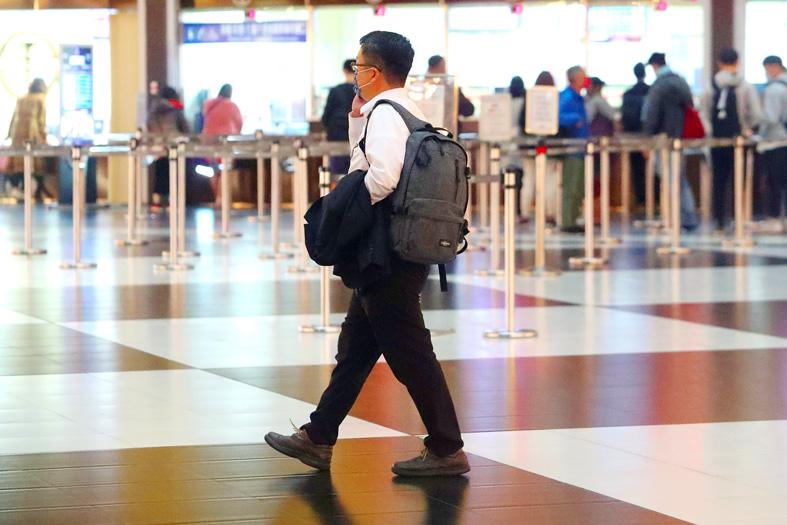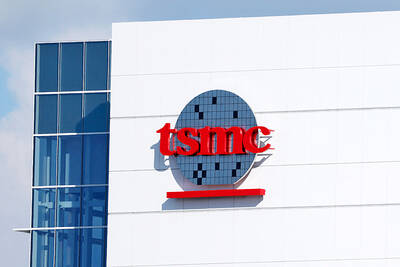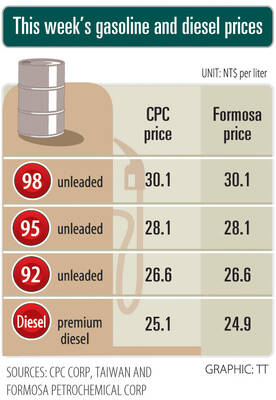The nation’s unemployment rate last month improved to 3.67 percent, 0.03 percentage points lower than a month earlier, as the job market remained stable and hiring recovered to near pre-COVID-19-pandemic levels, the Directorate-General of Budget, Accounting and Statistics (DGBAS) said yesterday.
“The market is stable with fewer unemployed and more jobs,” DGBAS Deputy Director Chen Hui-hsin (陳惠欣) said.
In February, the government’s business climate monitor was “red,” suggesting an economic boom.

Photo: CNA
The unemployment reading after seasonal adjustments was 3.72 percent, the lowest in 13 months, Chen said, adding that the figures should fall further this month and next before graduates enter the job market in the summer.
Still, the number of employed last quarter was down 3,000 compared with the same period last year, indicating that the negative effects of the pandemic remain and a low birthrate might also contribute to the drop, she said.
There were 439,000 unemployed last month, a decrease of 4,000 from a month earlier, the DGBAS report showed.
The number of people who lost their jobs to downsizing or closures fell by 3,000 and the number of first-time jobseekers dropped by 2,000, it said.
However, the number of people who quit their jobs increased by 2,000.
It took people longer to find jobs as the unemployment period extended 0.3 weeks to 22.7 weeks, it said, adding that first-time jobseekers averaged a 26-week wait to find work.
The number of people who were out of work for longer than a year grew by 4,000 to 55,000, it said.
The highest unemployment rate was among people with university degrees at 5.37 percent, followed by high-school graduates at 3.37 percent, while people with graduate degrees were unchanged at 2.84 percent, the agency said.
People with an education level of junior-high school or lower had the lowest unemployment rate of 2.53 percent, followed by those with a junior college education at 2.57 percent, it said.
People aged 20 to 24 had the highest unemployment rate at 11.85 percent, followed by those aged 15 to 19 at 8.48 percent, 25 to 29 at 6.27 percent and 30 to 34 at 3.63 percent, DGBAS said.
People aged 45 to 64 had the lowest unemployment rate at 2.12 percent, it said.
The nation’s headline unemployment rate of 3.67 percent is higher than Japan’s 2.8 percent, but lower than South Korea’s 4.3 percent, Germany’s 4.6 percent and Hong Kong’s 6.8 percent, it added.

Real estate agent and property developer JSL Construction & Development Co (愛山林) led the average compensation rankings among companies listed on the Taiwan Stock Exchange (TWSE) last year, while contract chipmaker Taiwan Semiconductor Manufacturing Co (TSMC, 台積電) finished 14th. JSL Construction paid its employees total average compensation of NT$4.78 million (US$159,701), down 13.5 percent from a year earlier, but still ahead of the most profitable listed tech giants, including TSMC, TWSE data showed. Last year, the average compensation (which includes salary, overtime, bonuses and allowances) paid by TSMC rose 21.6 percent to reach about NT$3.33 million, lifting its ranking by 10 notches

SEASONAL WEAKNESS: The combined revenue of the top 10 foundries fell 5.4%, but rush orders and China’s subsidies partially offset slowing demand Taiwan Semiconductor Manufacturing Co (TSMC, 台積電) further solidified its dominance in the global wafer foundry business in the first quarter of this year, remaining far ahead of its closest rival, Samsung Electronics Co, TrendForce Corp (集邦科技) said yesterday. TSMC posted US$25.52 billion in sales in the January-to-March period, down 5 percent from the previous quarter, but its market share rose from 67.1 percent the previous quarter to 67.6 percent, TrendForce said in a report. While smartphone-related wafer shipments declined in the first quarter due to seasonal factors, solid demand for artificial intelligence (AI) and high-performance computing (HPC) devices and urgent TV-related orders

Prices of gasoline and diesel products at domestic fuel stations are this week to rise NT$0.2 and NT$0.3 per liter respectively, after international crude oil prices increased last week, CPC Corp, Taiwan (台灣中油) and Formosa Petrochemical Corp (台塑石化) said yesterday. International crude oil prices last week snapped a two-week losing streak as the geopolitical situation between Russia and Ukraine turned increasingly tense, CPC said in a statement. News that some oil production facilities in Alberta, Canada, were shut down due to wildfires and that US-Iran nuclear talks made no progress also helped push oil prices to a significant weekly gain, Formosa said

MINERAL DIPLOMACY: The Chinese commerce ministry said it approved applications for the export of rare earths in a move that could help ease US-China trade tensions Chinese Vice Premier He Lifeng (何立峰) is today to meet a US delegation for talks in the UK, Beijing announced on Saturday amid a fragile truce in the trade dispute between the two powers. He is to visit the UK from yesterday to Friday at the invitation of the British government, the Chinese Ministry of Foreign Affairs said in a statement. He and US representatives are to cochair the first meeting of the US-China economic and trade consultation mechanism, it said. US President Donald Trump on Friday announced that a new round of trade talks with China would start in London beginning today,